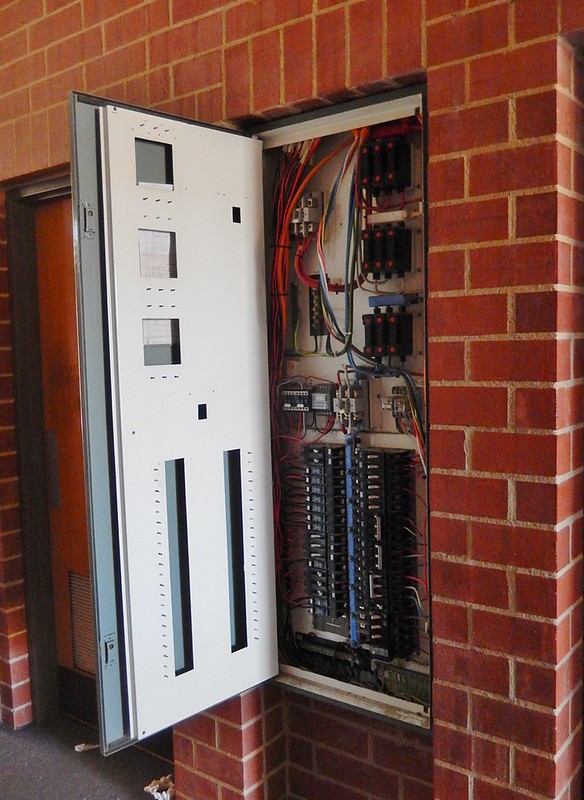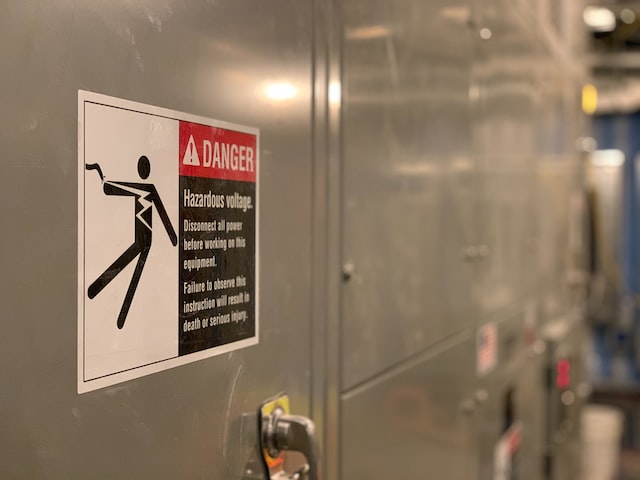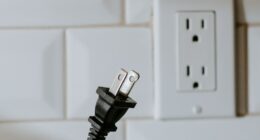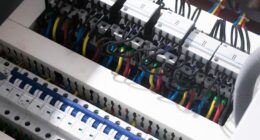A switchboard is a device used to connect different circuits together, while switchgear is a collection of devices used to control, protect, and isolate electrical equipment. Switchgear is generally more complex and provides higher levels of protection and control than a switchboard.
What is a switchboard?

A switchboard is a piece of electrical equipment that directs electricity from one circuit to another. It contains a series of switches that can be opened and closed to control the flow of electricity. A switchboard may also contain other devices such as fuses and circuit breakers.
Switchboards are typically used in commercial and industrial settings where there is a need to control the flow of electricity to different parts of the building. For example, a switchboard can be used to turn on the lights in one room while keeping the lights off in another room. Switchboards are also used in power plants and other facilities where electricity needs to be directed to different areas.
What is switchgear?
(Photo by Troy Bridges on Unsplash )

Switchgear refers to a collection of electrical devices that are used to control, protect, and isolate electrical equipment. It is typically used in power systems to regulate and distribute electrical power to various equipment and loads.
Switchgear can include a variety of devices, such as circuit breakers, fuses, switches, relays, transformers, and other protective devices. These devices work together to monitor and control the flow of electricity within an electrical system, ensuring that it is distributed safely and efficiently to equipment and loads.
The main functions of switchgear include:
- Control: Switchgear is used to control the flow of electricity within an electrical system. This includes controlling the voltage, frequency, and power factor of the system, as well as monitoring the status of various equipment and loads.
- Protection: Switchgear is also used to protect electrical equipment from damage due to overload, short-circuit, and other electrical faults. Protective devices like circuit breakers and fuses are used to interrupt the flow of electricity in the event of an electrical fault, protecting the equipment and preventing damage.
- Isolation: Switchgear can also be used to isolate electrical equipment from the rest of the system. This is important for maintenance and repair work, as it allows workers to safely work on equipment without being exposed to live electrical current.
Switchgear can be classified into different types based on their application and the voltage level of the electrical system they are used in. Examples of switchgear types include low-voltage switchgear, medium-voltage switchgear, and high-voltage switchgear.
The difference between switchboards and switchgear
The main difference between switchboards and switchgear is that switchboards are used to distribute electricity within a building while switchgear is used to control the flow of electricity between different parts of the electrical grid. Switchboards usually have circuit breakers and fuses that can be used to shut off power in case of an emergency, while switchgear typically does not have these features.
When to use a switchboard or switchgear
When to use a switchboard:
- If you need to distribute power to multiple circuits
- If you need to protect your circuits from overloads
- If you need to isolate certain circuits from others
When to use switchgear:
- If you need to control the flow of electricity
- If you need an electrical panel for your home or business
- If you need to connect or disconnect parts of your electrical system
How to properly install a switchboard or switchgear
Installing a switchboard or switchgear is not a difficult task, but there are some important things to keep in mind to ensure it is done properly. Here are the steps to take:
- Read the manufacturer’s instructions carefully. This is the most important step, as each manufacturer will have specific instructions on how to install their products.
- Choose the proper location. The switchboard or switchgear should be installed in a dry, well-ventilated area that is away from sources of heat or ignition.
- Install any required supports or brackets prior to installing the unit itself. This will ensure it is properly supported and level.
- Connect all of the incoming and outgoing cables according to the manufacturer’s instructions. Make sure all connections are tight and secure.
- Close up the unit and turn on the power supply. Test all connections and functions to make sure everything is working properly before putting it into service.
What is the difference between LV switchgear and switchboard?
Low-voltage (LV) switchgear and switchboards are both used in electrical systems to control and distribute electrical power, but there are some differences between the two.
LV switchgear refers to a collection of devices used to control, protect, and isolate electrical equipment in low-voltage systems (typically up to 1000 volts AC). This includes devices such as circuit breakers, contactors, relays, and protective devices. LV switchgear is often used in industrial and commercial applications to regulate and distribute power to various loads.
A switchboard, on the other hand, is a type of LV switchgear that is designed to connect different electrical circuits together. It consists of a number of switchgear assemblies that are mounted on a single panel, along with controls and monitoring devices. The switchgear assemblies can include devices such as circuit breakers, busbars, switches, and meters.
So, while both LV switchgear and switchboards are used to control and distribute power in electrical systems, switchboards are specifically designed to connect different circuits together, while LV switchgear includes a wider range of devices that are used to control, protect, and isolate equipment.
What is the difference between switchgear and switchboard Eaton?
Eaton is a company that manufactures a wide range of electrical equipment, including switchgear and switchboards. Here are the main differences between Eaton switchgear and switchboards:
- Switchgear: Eaton’s switchgear products are designed to control, protect, and isolate electrical equipment in low, medium, and high-voltage applications. They offer a wide range of switchgear products, including air-insulated switchgear (AIS), gas-insulated switchgear (GIS), and metal-clad switchgear.
- Switchboards: Eaton’s switchboards are designed to provide a centralized distribution point for power in a building or facility. They offer a wide range of switchboard products, including panelboards, distribution switchboards, and low-voltage switchboards.
In general, switchgear is used to regulate and distribute power in electrical systems, while switchboards are used to connect different electrical circuits together. Eaton offers a variety of both switchgear and switchboard products to meet the needs of different applications and industries.
What are the types of switchboards?
Switchboards are classified according to their voltage levels, as follows:
- Low-voltage switchboards (up to 1 kV): These include domestic switchboards, which are used in houses and small buildings; they may be air-insulated or metal-enclosed.
- Medium-voltage switchboards (1 kV to 36 kV): These include industrial switchboards, which are used in factories, power plants, and other large installations; they may be air-insulated or metal-enclosed.
- High-voltage switchboards (over 36 kV): These include substation switchboards, which are used in electricity substations; they are always metal-enclosed.
What are the types of switchgears?
Switchgear is a general term used to describe a range of electrical equipment used to control, protect, and isolate electrical power systems. Here are the main types of switchgear:
- Air-insulated switchgear (AIS): AIS is a type of switchgear that uses air as the insulation medium between the live parts and the earthed metal enclosure. It is commonly used for low-voltage applications.
- Gas-insulated switchgear (GIS): GIS is a type of switchgear that uses gas (usually SF6) as the insulation medium between the live parts and the earthed metal enclosure. It is commonly used for medium and high-voltage applications.
- Metal-enclosed switchgear (MES): MES is a type of switchgear that uses a metal enclosure to house the switchgear components. It is commonly used for medium and high-voltage applications.
- Hybrid switchgear: Hybrid switchgear combines the advantages of AIS and GIS technologies. It uses a combination of air and gas insulation to reduce the size and weight of the switchgear.
- Withdrawable switchgear: Withdrawable switchgear is a type of switchgear that allows the circuit breaker to be easily removed from the switchgear for maintenance or replacement.
- Ring main units (RMUs): RMUs are compact, metal-enclosed switchgear units that are commonly used in distribution networks. They are designed for outdoor use and are often used in applications where space is limited.
These are some of the main types of switchgear used in electrical power systems. The type of switchgear used depends on the specific application, voltage level, and other factors.
Featured Image By – Photo by Troy Bridges on Unsplash








